 Previous Article
Previous Article
Does Composite Decking Expand? An Ultimate Guide to Installation Gaps
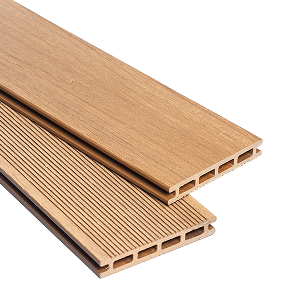
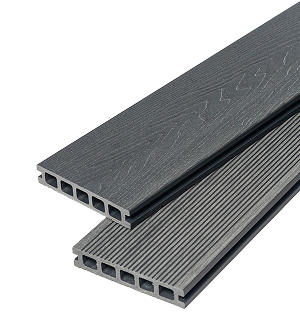
One of the biggest concerns for UK homeowners when choosing a new deck is safety, especially during our notoriously wet weather. You may be wondering:
Is composite decking slippery when wet?
The short answer is no, modern composite decking is not slippery. When correctly maintained, it is engineered to provide good to excellent slip resistance.
Modern composite decking performs exceptionally well in wet conditions. Reputable suppliers test their products against rigorous standards using a Pendulum Test Value (PTV) to classify slip risk. Here is how that scoring works:
To give you a true reflection of performance in the British weather, our internal tests are performed in extremely wet conditions. Here’s how different board types perform:
| Board Type | PTV Score (Very Wet) | Slip Risk Classification |
|---|---|---|
| Grooved Finish | 45 | Low Risk |
| Premium Wood Grain | 36+ | Low Risk |
| Classic Wood Grain | 34 | Low-to-Medium Risk |
| Capped / Shielded | Capped / Shielded | Low Risk |
As you can see, all modern composite decking types offer a low to medium slip risk right from installation. The key is to maintain that high level of performance.
If a deck feels slippery, it’s almost always caused by a thin layer of surface contaminants, not the board itself. Understanding these causes is the key to prevention.

As time passes, fallen leaves, pollen, and dirt can accumulate on your decking. If left for long periods, this layer traps moisture and not only looks unclean but promotes the growth of mould and algae.
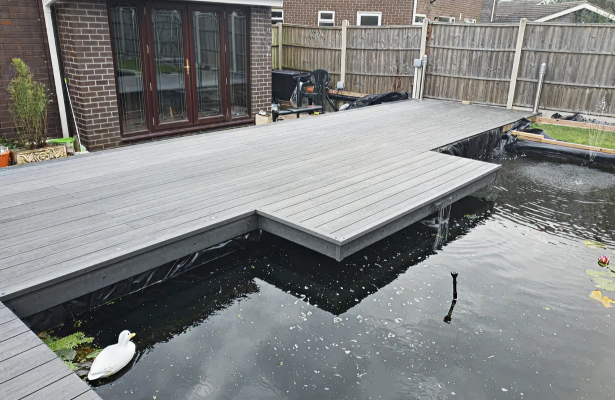
The number one reason any outdoor surface becomes slippery is the growth of mould and algae. While these organisms can’t naturally grow on capped composite, they can grow on the dirt and debris that sits on top of it. When left untended, this slippery layer covers your decking.
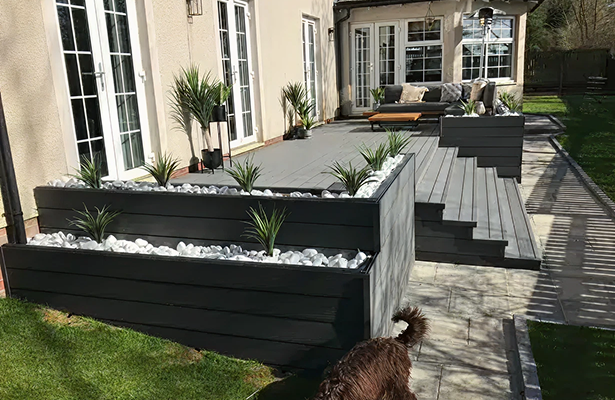
During winter, all decks will become slippery when there is an accumulation of ice. This is an unavoidable fact of nature, no matter the material.
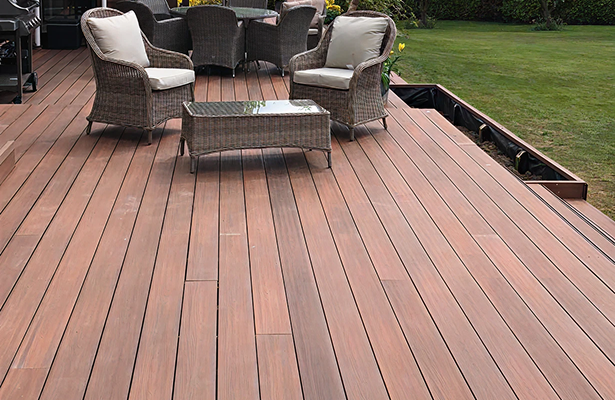
If your composite decking is very old (an early-generation product from the early 2000s), it may be more prone to becoming slippery as these older boards tend to absorb more moisture, leading to the development of mould.
Because slip risk is caused by surface build-up, retaining your deck’s high safety performance is simple.
We must stress this: composite de cking is not “no maintenance,” it’s “low maintenance.” To retain its low risk of slip, you must clean it.
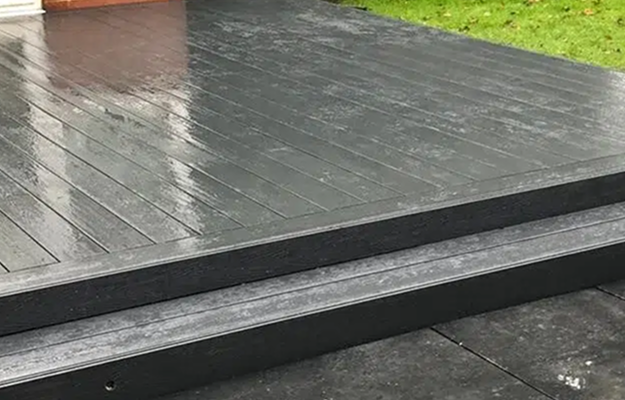
The most important step is to keep your deck clean by removing fallen leaves, pollen, dirt, and debris as soon as possible. A simple sweep with a soft-bristle brush once a week is the minimum we recommend to maintain your deck’s appearance and ensure its safety.
Although composite decking absorbs minimal moisture, any standing water can still create an environment for mould growth. After rainfall, a quick sweep to remove any puddles can make a big difference. For ice, use non-abrasive removal methods like a plastic shovel.
When installed correctly, your deck should allow for the proper drainage of rainwater. Make sure to keep the small gaps between the decking boards clean and clear to allow water to escape.
The level of slip resistance can vary slightly based on the board’s design and surface finish.
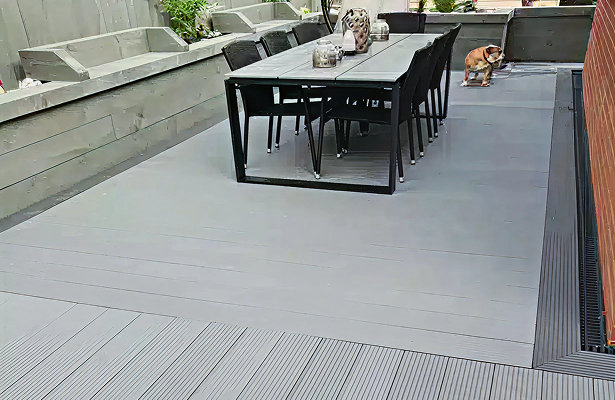
If slip resistance is your absolute top priority, consider purchasing grooved or textured composite decking boards. Embossed and grooved surfaces offer better friction, helping to improve grip. In our tests, boards with a thin grooved finish achieve the highest PTV score of 45.
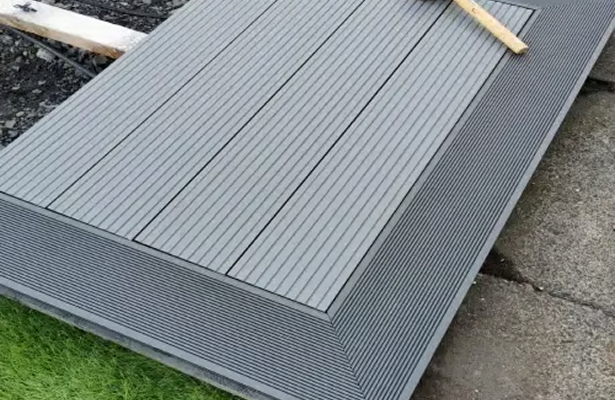
There is very little difference in slip-resistance between modern first-generation (uncapped) and second-generation (capped) boards. All reputable products are tested to meet the same minimum safety requirements of both PTV and EN standards. This means you can choose a board based on other factors like appearance and cost, without having to worry about a significant difference in safety.
Our internal testing confirms that modern composite decking offers good to excellent slip resistance, even in very wet conditions, making it a much safer choice than traditional timber.
To retain this high performance long-term, simple, regular maintenance is key. By keeping the surface clean from dirt and debris, you prevent the growth of mould and algae.
 Previous Article
Previous Article
Does Composite Decking Expand? An Ultimate Guide to Installation Gaps

A UK Guide to Decking Subframes & Joists